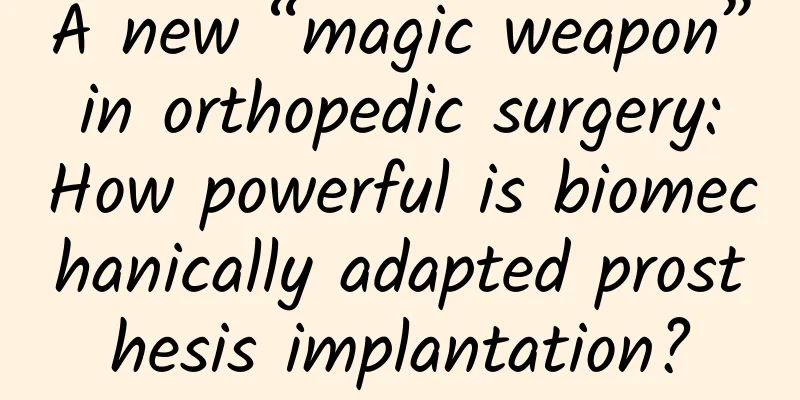A new “magic weapon” in orthopedic surgery: How powerful is biomechanically adapted prosthesis implantation?

|
Planner: Chinese Medical Association Reviewer: Cao Tiesheng, Director of 3D Printing Center, Second Affiliated Hospital of Air Force Medical University Biomechanically adapted prosthesis implantation is a breakthrough technology that makes orthopedic surgery more precise and personalized. In traditional orthopedic surgery, doctors usually need to use standard-sized prostheses, which may not fully fit the bone structure of each patient, causing discomfort or functional problems. Biomechanically adapted prosthesis implantation solves this problem through advanced technology. It accurately measures the patient's bone density and bone strength, combines 3D printing and AI-assisted design, and tailors the most suitable prosthesis for the patient, thus achieving unprecedented biomechanical adaptation during surgery. The core of this technology is personalized design. The doctor will first obtain the patient's bone structure data through CT or MRI scans, and then use 3D printing technology to make a prosthesis that fully matches the patient's bones. In this way, the prosthesis can accurately adapt to the patient's bone shape and functional needs, greatly improving the comfort and functional effect after implantation. In addition, AI-assisted design technology is also integrated into biomechanically adapted prosthesis implantation. The AI system can automatically analyze the patient's imaging data and, combined with the doctor's clinical experience, provide the most optimized solution for prosthesis design. Doctors can use 3D models to perform virtual surgery before surgery, rehearse the operation steps, predict possible problems, and make corresponding adjustments during the actual surgery. This rehearsal can significantly improve the success rate and safety of the surgery. This intelligent design method not only improves surgical efficiency, but also further improves the adaptability and safety of the prosthesis. In 2023, the Department of Orthopedics at Peking University Third Hospital successfully completed the first biomechanically adapted prosthesis implantation surgery. Compared with other porous structure fusion devices, this prosthesis matches the patient's bone strength, effectively reducing the risk of complications such as fusion device sinking and intervertebral height loss in the early postoperative period. The patient recovered quickly after surgery and his symptoms were significantly relieved, which fully demonstrated the excellent efficacy of biomechanically adapted prosthesis implantation. |
<<: What are some amazing applications of 3D printing in the medical field?
>>: Why are you "picky" and "partial" in your eating habits? The immunological mechanism behind it!
Recommend
Self-massage can treat menstrual irregularities
Self-massage can treat irregular menstruation. Wo...
How to choose jackfruit? The edible value of jackfruit
Many friends like to eat jackfruit. Mature jackfr...
39.8°C, high fever persists! Infection cases found in many places, be vigilant →
Summer is the peak season for herpetic pharyngiti...
Is it the feet's fault if they grow crooked? These three deformities are caused by wearing shoes
"Three-inch golden lotus" is a bad cust...
What causes less menstrual flow at 40?
Once women reach the age of 40, there will be man...
What is the best medicine for treating uterine fibroids?
Although the probability of uterine fibroids wors...
Why do I sweat four months after giving birth?
Every woman will sit in confinement for one month...
Diagnosis and treatment of vague abdominal pain in 4 months of pregnancy
Generally speaking, preparing for pregnancy for t...
During ovulation, the leucorrhea is more like water
Normal leucorrhea should be sticky, transparent o...
Does taking too much progesterone have any effect on the fetus?
In the first three months of pregnancy, if you ta...
Top 10 calcium-supplementing foods for pregnant women
During pregnancy, you must pay attention to calci...
Are you afraid of catching a cold due to gynecological inflammation?
Many women will have some gynecological inflammat...
The difference between cervicitis and cervical cancer
Cervicitis and cervical cancer are both relativel...
Many people think that the longer you exercise every day, the better. Let's hear what the experts say.
Zhang Ming August 8, 2024 is the 16th National Fi...









